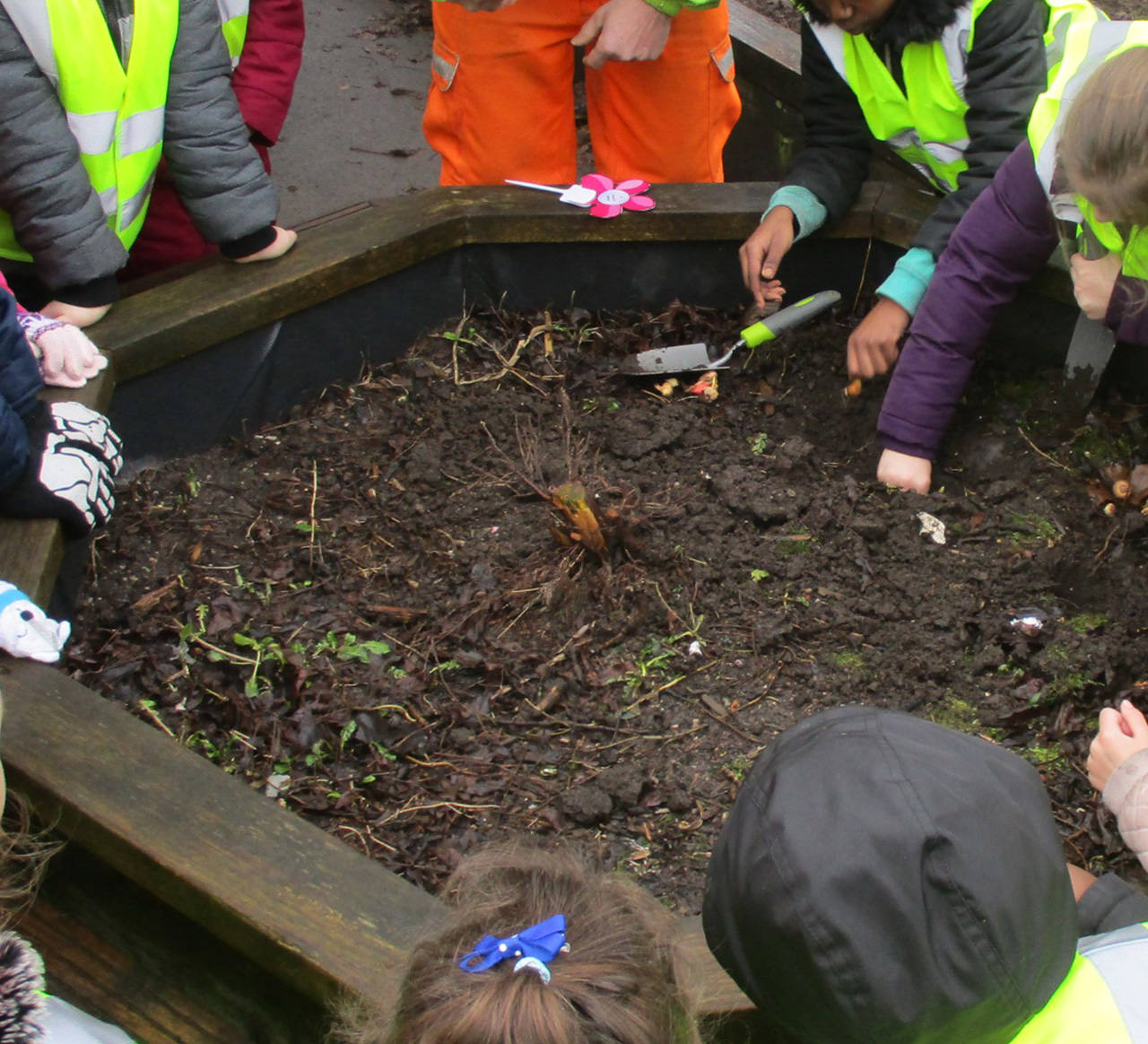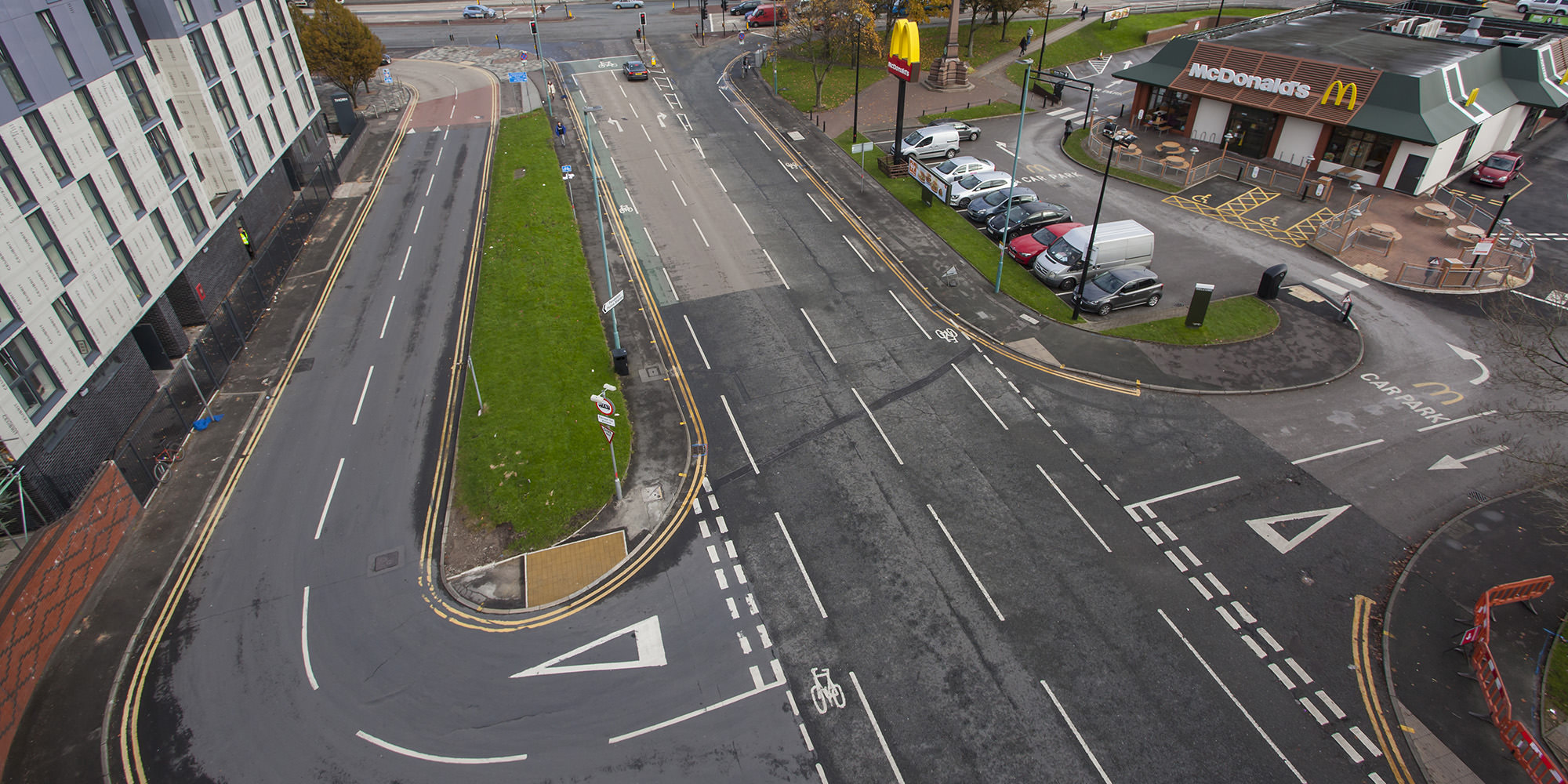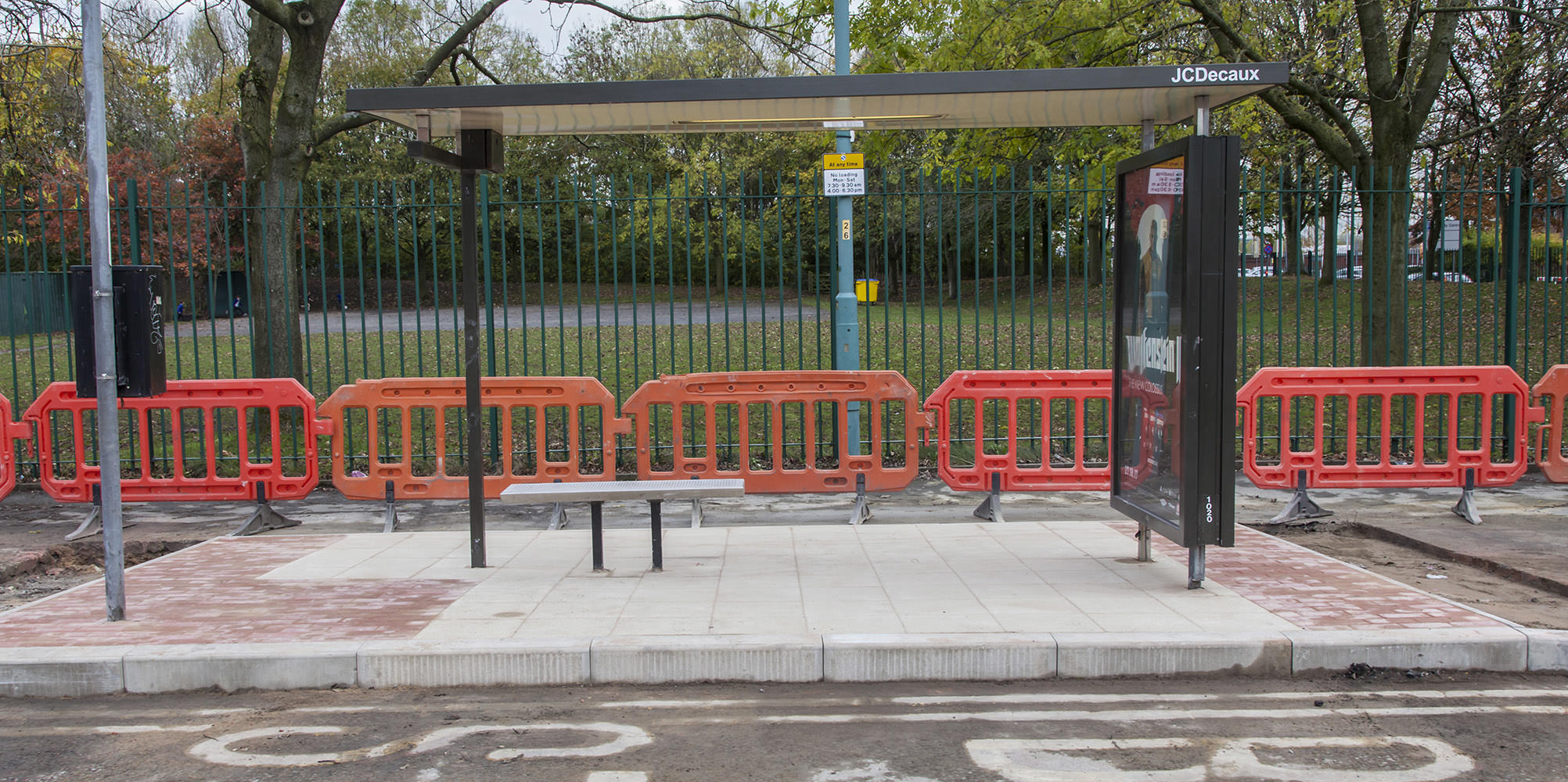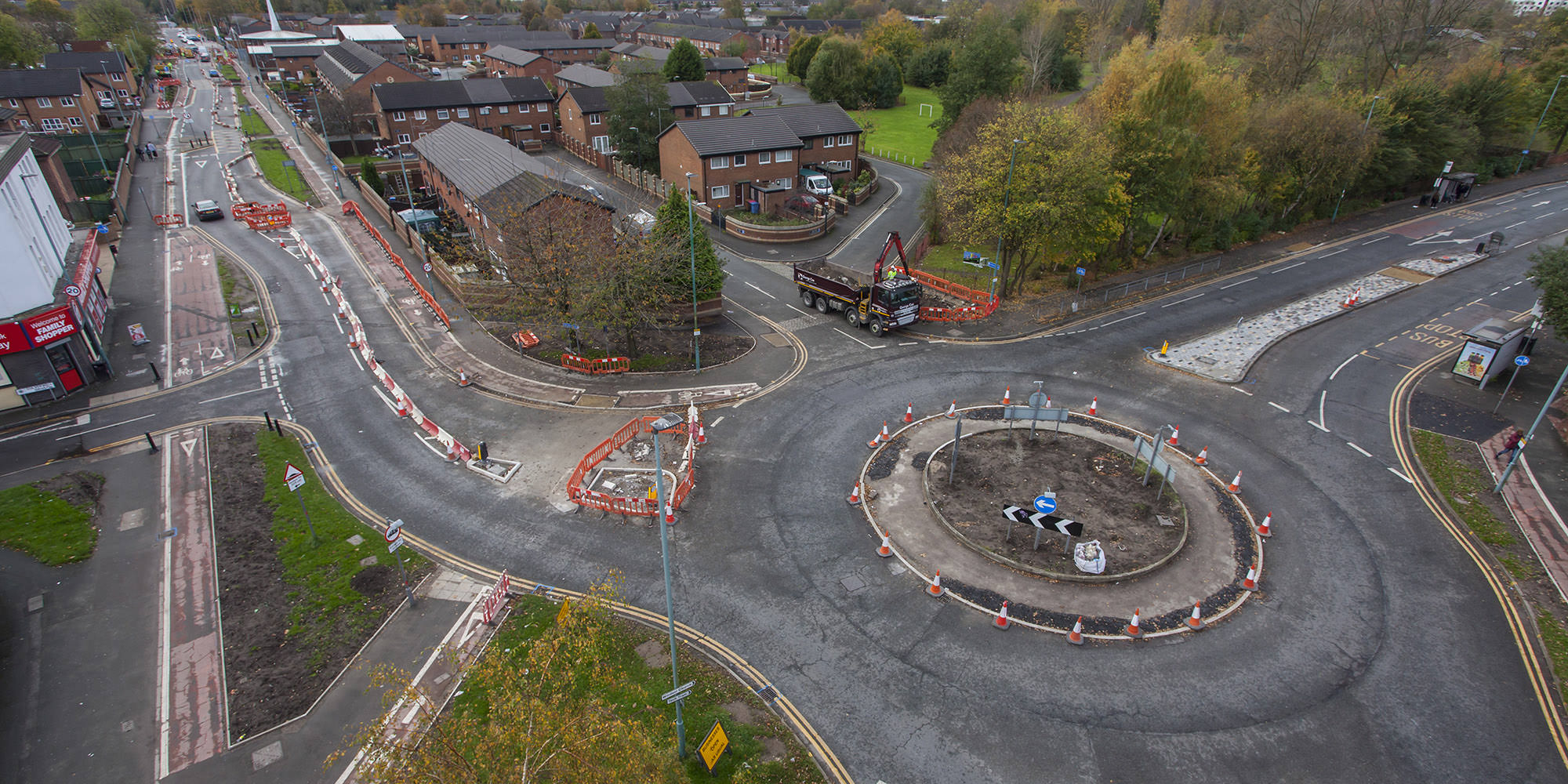We were successful in winning this project, which formed part of Salford City Council’s Re-Generation Programme via mini competition. Employed as Principal Contractor our scope of work included the upgrading of existing footways, cycleways, areas of carriageway and hard/soft landscaped areas. The extent of the works covered Cross Lane between it’s junctions with Liverpool Street and Broad Street and a 50m section of Churchill way.
Due to the location of the works, vehicle access always had to be maintained for local businesses which received a heavy footfall of customers, a primary school and residents living near the vicinity of the works. To achieve this, we adopted a single lane closure to Cross Lane and developed detailed traffic management which was reviewed daily to ensure continual maintenance. Due to the closeness of the primary school to the works extra vigilance was sustained throughout the life cycle of the project, ensuring that the fences and barriers to the work area where in situ.
Consultation was carried out with local businesses prior to works being carried out in the vicinity of the premises. Disruption was kept to a minimum and working areas where cordoned off from the public with barriers and appropriate signage was erected to direct the public.
After we were awarded the contract, we undertook a full review to assess whether any value engineering would be possible. Once this was completed, we approached Salford City Council with a potential saving of £28,000. This saving was achieved by adjusting the levels of the asphalt and replacing it with new wearing course overlay. The change would give the same result and longevity as the original specification, but at a substantial cost saving.

We were invited by Urban Vision and Salford City Council to participate in their Social Value and community engagement project at St Paul’s Primary School. The school were approached during the design phase and asked whether they wanted to involve some of their pupils in some part of the Cross Lane works. As there were elements of soft landscaping within the project, this was selected as the most suitable aspect of the project for the pupils to participate in.
Originally it was proposed that the pupils help out on some of the bulb planting within the highway landscape areas however, to allow the children more opportunity to monitor and appreciate the bulbs as they grow, it was decided that the planting would be carried out within the school grounds in existing planters.











